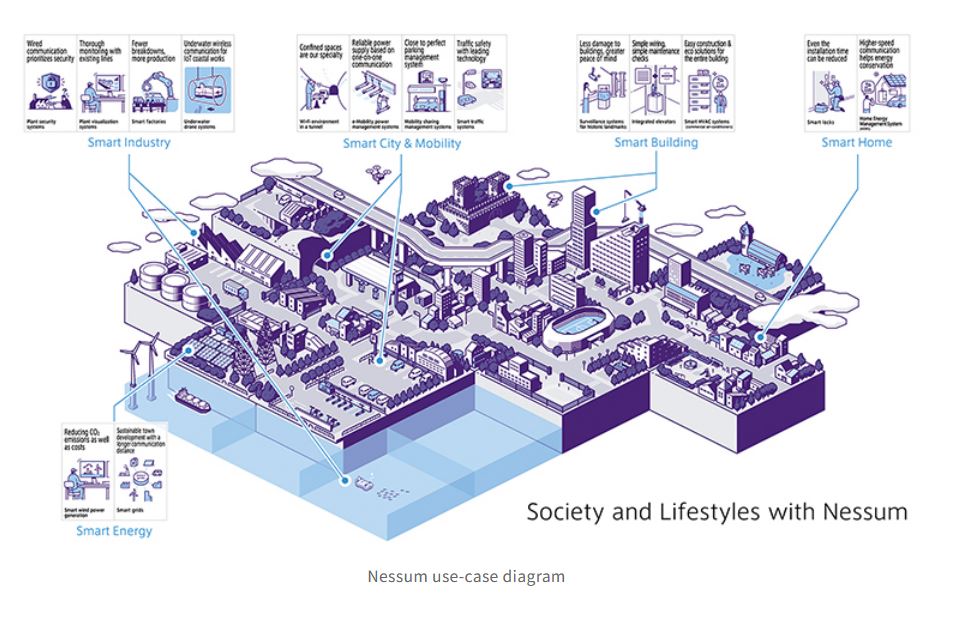IEEE approves Panasonic's OFDM based Nessum as new IEEE 1901c standard
Date: 10/03/2024
Panasonic has developed an innovative communications technology based on Wavelet orthogonal frequency division multiplexing (OFDM) method, to enable seamless communication across various mediums. IEEE Standards Association Board of Directors has approved it as the new IEEE 1901c standard. Panasonic has rebranded this as "Nessum" paving the way for utilizing a unified modulation and demodulation scheme in wired, wireless, and underwater communication mediums, marking a significant stride towards realizing an IoT-driven society.
Nessum extends wired communication frequencies from megahertz to kilohertz bands, enabling long-distance communication through conventional metal wiring like power lines and communication lines. Nessum facilitates Mbps-class broadband communication, IP support, topology-free network configurations, and robust security features. Moreover, its application extends to wireless communication, enabling short-range, high-speed communication with limited range, thereby enhancing IoT communication capabilities, even underwater.
The adoption of Nessum technology in Europe and Asia for smart grid and smart energy communication infrastructure signifies its transformative potential. Nessum is used in air conditioning equipment and building control equipment for large-scale facilities such as large buildings and factories enabling smart factories and smart buildings.
By reducing the cost of IoT device deployment and enhancing basic performance and functionalities, IEEE 1901c approval amplifies the scope and utility of Nessum technology. With ongoing semiconductor IP core design and development, Panasonic aims to license these cores to semiconductor companies, driving widespread adoption across industries and reinforcing its commitment to innovation.
Panasonic to collaborate with the Nessum Alliance and member companies to ensure interoperability and promote international standardization.



